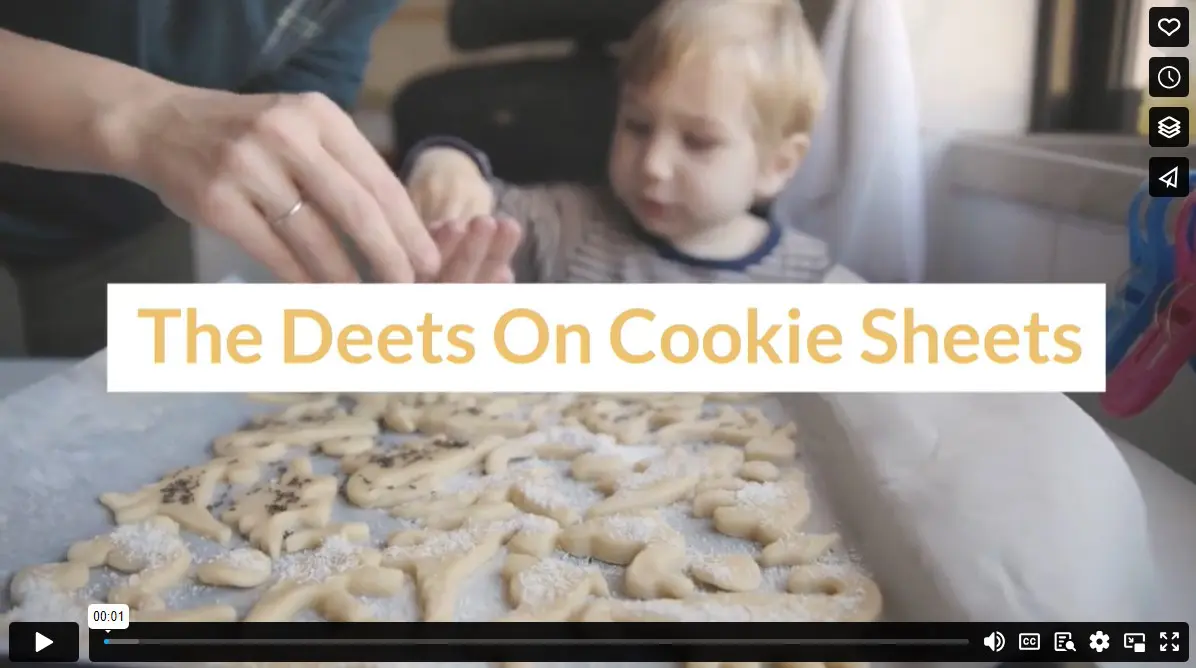When making homemade cookies, once you have your dough mixed, chilled, and ready to bake, you’ll likely reach for your favorite “cookie sheet.” But what if we told you the pan you’ve been using to bake your favorite treat might not be a cookie sheet at all?
It’s true. The term cookie sheet is often misused. Many people mistakenly refer to whichever pan they bake cookies on as a cookie sheet. While this might not seem like a big deal to some, we feel it’s important to be familiar with your bake ware.
Keep reading to discover the differences between the two types of sheet pans used for baking. You’ll also learn how to select the ideal pan to help perfect your favorite gourmet cookie recipe.

(freepik/Freepik)
What’s The Difference?
Any flat pan used to bake things in the oven can be called a baking sheet. However, there are two main types of baking sheets; cookie sheets and jelly roll pans. While they are similar, they have some definite differences.
Cookie Sheets
An actual cookie sheet is primarily flat, with only one or two slightly raised edges. The mostly flat design allows good air circulation, which helps control moisture to create perfectly crisp cookies. Cooled cookies can be slid off the flat edges, while the raised edge makes it easier to grip the pan.
Cookie sheets are for baking cookies, but you can use them for other baked goods, such as biscuits, pastries, or other portioned doughs. Using a cookie sheet for anything with excess liquid will leave you with a mess in your oven.
The standard size for a cookie sheet is 13×18 inches, but they also come in bigger or smaller sizes.
Jelly Roll Pans
It’s pretty easy to understand why a cookie sheet is called a cookie sheet; you use it for baking cookies. So, if a pan is named a jelly roll pan, it’s likely used to bake jelly rolls. Jelly rolls? What the heck are those?
A jelly roll is a sponge cake rolled out and filled with things such as cream, jam, or jelly. You can find them in the store under names such as HoHos or Swiss Rolls.
The main difference between a cookie sheet and a jelly roll pan is that the latter has raised edges on all sides. The raised edges are typically about one inch tall, making it the perfect depth for baking jelly rolls or other rolled cakes.
Jelly roll pans come in various sizes; however, the standard size is 10×15 inches. The raised edges, along with the size, make the jelly roll pan quite versatile. Outside of rolled cakes, some great uses for a jelly roll pan include:
- Roasting Vegetables
- Making Homemade Granola Bars
- Making A Sheet Cake Or Thin Brownies
- Roasting Meat
- Baking Cookies or Bars
- Toasting Nuts
- Making A Sheet Pan Dinner
- Making Homemade Toffee Or Peanut Brittle
Having at least one cookie sheet and jelly roll pan in your kitchen is ideal. However, if you have to choose one or the other, a jelly roll pan is probably the better option because of its many uses.
While a cookie sheet is the best choice when it comes to baking cookies, a jelly roll pan will still get the job done. Just note that you may need to adjust the baking time as the heat flow around the cookies will slightly differ with a jelly roll pan.
Finding A Quality Baking Sheet
When shopping for your new cookie sheet and jelly roll pan, there are a few things to consider before purchasing. Following these guidelines will help ensure your next batch of cookies tastes better than ever.
1. Light Vs. Dark
When choosing a baking sheet, light or medium-colored pans are ideal. Dark-colored pans absorb more heat, leading to over-baked cookies.
2. Thickness
A quality baking sheet will be thick, heavy-duty, and durable. A flimsy baking sheet will warp in the high heat of the oven. A thin or warped pan can lead to unevenly baked food or burned bottoms.
3. Material
The material of a baking sheet is essential for its performance. While there are several options on the market, aluminum tends to be the most popular. Aluminum is an excellent choice because it heats up quickly, bakes evenly, is durable, and is affordable.
4. Non-Stick Coatings
Non-stick coatings may sound great, but over time that coating begins to wear off and lose its effectiveness. Additionally, many non-stick sheet pans are dark colored, which can cause your baked goods to cook too quickly on the bottom.
Sticking with bare metal is ideal, but if you are worried about your dough sticking to the pan, the best option is to line your baking sheet with parchment paper or a silicone baking liner. As a bonus, cleanup will be a breeze.
5. Size
As mentioned above, cookie sheets and jelly roll pans come in various sizes. However, it is best to stick with the standard-sized pans. The standard-sized pans will accommodate most recipes and fit easily into any oven.
There you have it; now, you can refer to your bakeware appropriately and find a top-notch baking sheet. Not only will you sound like a pro in the kitchen, but using a quality cookie sheet will make your cookies taste like you ordered them from a cookie delivery service. Which is never a bad idea either.
Video
Infographic
Several factors must be considered when purchasing a new cookie sheet or jelly roll pan. Following the guidelines in this infographic can elevate your next batch of cookies to perfection.


